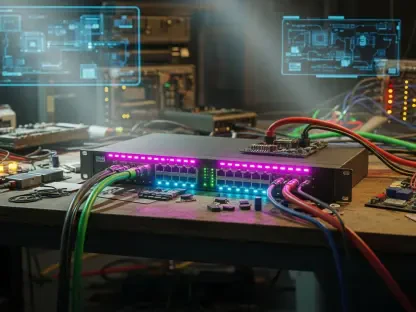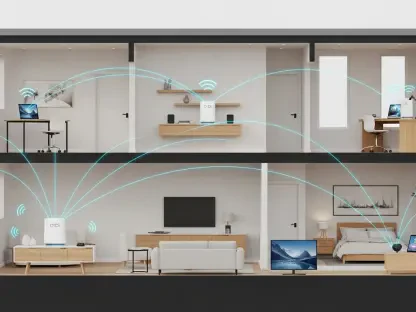Vladislav Zaimov, with his extensive background in telecommunications and specialization in the risk management of vulnerable networks, provides insightful perspectives on the current and upcoming technological shifts within the industry. With the advent of 6G and new technological developments being top of mind, Vladislav sheds light on the potential pitfalls to avoid and the innovations to embrace.
How do you see 6G evolving compared to its predecessors, and what specific “mistakes” of 5G do you think need to be avoided?
6G presents an exciting evolution over its predecessors, offering improved speed, connectivity, and efficiency. However, we must reflect on 5G’s limitations. One of the primary lessons is ensuring that the rollout does not become just another generational shift. This means addressing issues like high implementation costs and hardware dependency. For 6G, avoiding these pitfalls involves ensuring that new technologies don’t create unnecessary expenses for operators, focusing instead on enhancements that provide tangible benefits to consumers and businesses without added financial burdens.
Can you elaborate on the idea that 6G should not require a forced hardware refresh? What role do software upgrades play in this transition?
The concept of avoiding a forced hardware refresh with 6G is pivotal. The goal is to ensure most advancements can be realized through software upgrades rather than necessitating widespread hardware changes. This approach not only reduces costs but also eases deployment. With software playing a central role, it allows for a more agile evolution where updates can be managed more efficiently, ensuring that improvements can be rolled out rapidly and seamlessly to existing infrastructure.
What are the advantages of using 1024 QAM in increasing data throughput for 5G transmissions?
Utilizing 1024 QAM greatly enhances data throughput capabilities. This modulation technique allows for a higher data rate by packing more bits into each signal element. Compared to the older 256 QAM, the jump to 1024 increases the density of information, which translates to significantly higher download speeds for users. This means that more data can be moved across the network in the same amount of time, enhancing overall network performance.
How does the use of 1024 QAM contribute to energy savings and improved spectrum efficiency?
1024 QAM contributes to energy savings by optimizing the data transmission process without requiring additional hardware. By improving the efficiency of how data is handled and transmitted, networks can achieve higher performance with less energy. Spectrum efficiency is also enhanced as more users can be accommodated within the same bandwidth, utilizing resources to their fullest potential and freeing up capacity for additional users and services.
What is the purpose of the Asia-Africa-Europe-2 (AAE-2) subsea cable system, and which regions will it connect?
The AAE-2 subsea cable system is designed to fortify and enhance global connectivity, linking critical regions across Asia, Africa, and Europe. Specifically, it will connect places like Hong Kong and Singapore to Italy, traversing key terrestrial corridors such as Thailand, the Arabian Peninsula, and Egypt. This expansive infrastructure aims to support high-capacity data transmission, contributing to more robust and reliable international communications.
How are telecom companies incorporating generative AI (GenAI) into their operations, and what has driven the increase in GenAI projects?
Telecom companies are embracing GenAI to revolutionize various operational facets, from network optimization to customer service enhancement. The technologies offer innovative solutions that drive operational efficiency and create new customer engagement avenues. The surge in GenAI projects is propelled by the promising capabilities of AI in addressing complex problems and streamlining tasks, offering a competitive edge in a rapidly evolving market.
What are the industry-specific GenAI/AI offerings that software vendors have introduced for the telecom sector?
Software vendors have eagerly pursued opportunities in the telecom space by developing tailored GenAI/AI solutions. These include advanced analytics platforms, customer interaction interfaces, and predictive maintenance tools. Such offerings enable telecom companies to harness AI’s potential to refine performance, predict trends, and deliver superior customer experiences, showcasing AI’s critical role in the industry’s future.
Can you shed light on the recent mobile network outage in Spain caused by a power failure? How did different operators respond to it?
The recent power outage in Spain underscored the vulnerabilities within telecom infrastructure. As power failures swept the region, many networks struggled to maintain service. However, responses varied among operators. Some networks, like Vodafone, displayed commendable resilience, maintaining a more stable service due to robust backup systems. This incident highlights the importance of investing in reliable backup power solutions to minimize service disruption during unforeseen events.
What is the significance of Sateliot’s partnership with Syniverse, and how will the TAP and BCE standards be applied to non-terrestrial networks?
Sateliot’s collaboration with Syniverse represents a pioneering step for non-terrestrial network operations. By leveraging the GSMA’s TAP and BCE standards, they aim to create a standardized billing framework, facilitating efficient and transparent financial exchanges. This partnership not only streamlines operations but also underscores the shift towards incorporating satellite-based solutions within the broader telecom ecosystem.
How does the European Commission’s approval of SES’s acquisition of Intelsat impact the competitive landscape of the satellite industry?
The approval of SES’s acquisition of Intelsat is likely to reshape the satellite industry. By combining their capabilities, SES can enhance its multi-orbit operations, offering improved coverage and expanded service offerings. This merger strengthens SES’s position, potentially increasing competition for other players while also fostering innovation within the industry, ultimately leading to more dynamic service provision to a broader audience.
What is the Next Generation Emergency Call (NG eCall) protocol, and how does it improve upon the previous car emergency call systems?
The NG eCall protocol marks a significant advancement in emergency response technologies for vehicles. Unlike previous systems, NG eCall can transmit data via LTE and ensure a voice connection over commercial 4G networks. This dual capability enhances the reliability and speed of emergency communications, ensuring that critical information reaches emergency services promptly, which could be vital in saving lives.
Why do you think Netflix is investing over €1 billion in Spanish content, and how might this impact the local entertainment industry?
Netflix’s substantial investment in Spanish content underscores the growing global appetite for diverse storytelling. This influx of resources can elevate the local entertainment industry by creating job opportunities, nurturing talent, and fostering regional narratives that resonate globally. It also has a catalytic effect on the local economy and encourages innovation within Spain’s cultural and creative sectors.
Do you have any advice for our readers?
In today’s rapidly advancing tech landscape, staying informed and adaptable is key. Embrace continuous learning, whether it’s about new technologies like AI or the latest in telecom advancements. Understanding these shifts not only enhances personal growth but also prepares individuals and organizations to thrive in a future where technology and connectivity play ever-growing roles.









